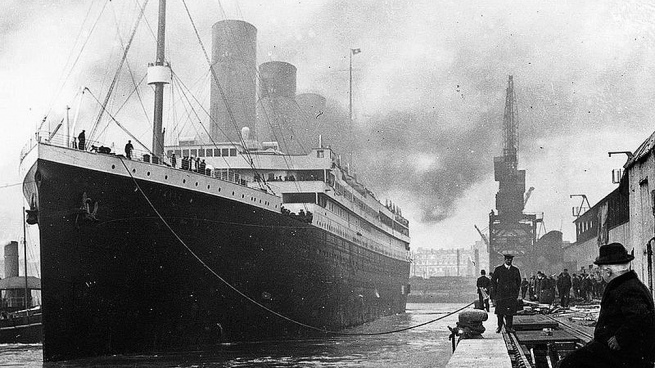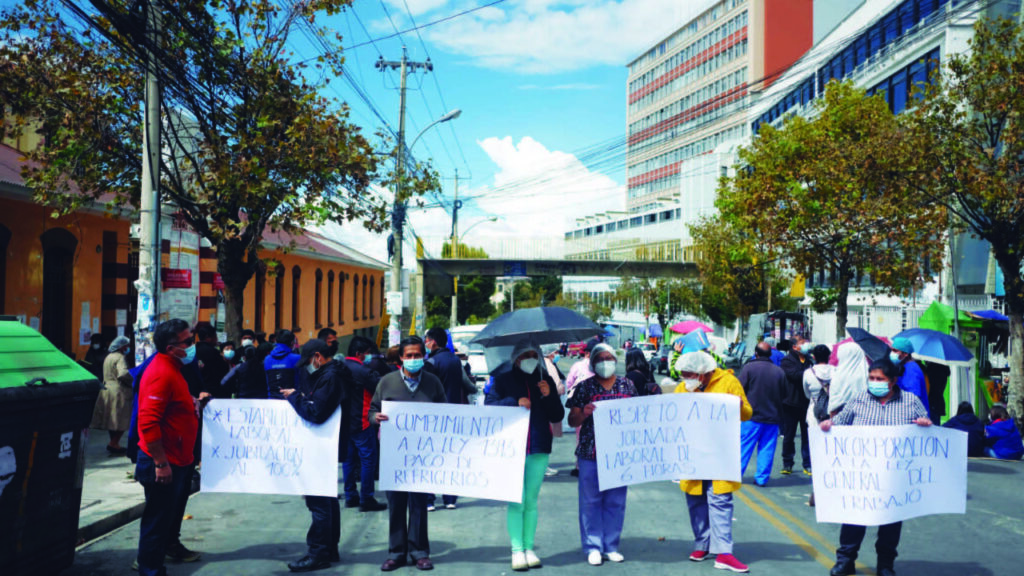110 years after the sinking of the Titanic, the most famous passenger ship in the world, which had been considered “unsinkable”, continues to arouse attraction for researchers and inspiration for writers, musicians and filmmakers, and is the subject of million-dollar auctions, museums and life-size replicas , as well as a setting for myths and stories that are difficult to verify.
Nearly midnight on April 14, 1912the famous ocean liner hit an iceberg just four days after setting sail from the English port of Southampton and after passing through Cherbourg (France) and Queenstown (Ireland) en route to New York with 2,223 passengers, and sank at 2:20 a.m. following in the icy waters located about 500 kilometers from the Canadian island of Newfoundland.
A Cordovan on board

More than 1,500 people died in the catastrophe, including Edgar Andrew, born in Río Cuarto (Córdoba), whose suitcase was found in the sea 90 years later with fairly well-preserved personal objects and that is exhibited in different museums together with other pieces found from the expedition that located the remains of the Titanic on September 1, 1985.
Discovered by a secret mission of the US Navy to search for two sunken nuclear submarines, the remains of the famous ocean liner are part of the underwater cultural heritage protected by the United Nations and, in addition, since 2020 they are protected by a historic treaty signed between the United Kingdom and the United States. to ensure that the place where it sank is preserved and respected.
In reality, the young Argentine had to go to the United States to meet his brother a week later at the Oceanic, but a charcoal burners’ strike advanced the plans and left a foreboding letter to a friend who would not be able to receive his visit in England .
“I figured Josey that I embark on the largest steamer in the world, but I find nothing proudbecause right now I wish the Titanic was submerged at the bottom of the ocean,” says the letter reproduced in the virtual museum opened last year in his honor.
Besides, among the stories that circulate about the tragedy, there is one that indicates that Edgar saved the life of the English teacher Edwina Trouttwith whom he had shared dinner that night, when he gave her his life jacket after seeing her desperate, a story was not verified with accurate data.
Violeta, the Bahian who managed to save herself

Among the more than 700 survivors there was also an Argentine, Violet Constance Jessop, who had been born in Bahía Blanca and was one of the few women who were part of the crew. She was a waitress in one of the first class luxury lounges and she managed to save herself on one of the boats by virtue of the emergency code that she prays “women and children first”.
In a BBC investigation, entitled “Miss Unsinkable”, it is indicated that Jessop had survived the collision of the Olympic ocean liner with a warship off the British coast in 1911. and later to the attack of the Germans against the Britannic, in 1916, during the First World War, where she traveled as a Red Cross nurse.
A city of 46,328 tons

The Titanic was designed by Bruce Ismay, president of the White Star company, and Lord Perrie, president of Harland & Wolff shipyards in Belfast, along with the ships Olympic and Gigantic – later called Britannic – to compete with the Cunard Line for supremacy. on transatlantic voyages.
It was built in two years and from its origins it had a legendary imprint: “It became ‘the largest moving object ever created’, a mass 270 meters long and 53 meters highwith a net weight of about 46,328 tons, and that could navigate at a maximum speed of 22.5 knots (about 42 kilometers per hour) thanks to its 55,000 engine horsepower, displacing more than 50,000 tons of water in its path” , remembers National Geographic.
It was also the most majestic ship ever built, in a way a symbol of the social inequalities of the early 20th century.

The social stratification of the ship was very rigid, as reflected by James Cameron in his famous 1997 film, and numerous sociological studies cite it as an example. A ticket in first class at that time was around $4,350, which translated to today would be about $125,000. according to the estimate of the OceanGate company that promotes underwater expeditions to the famous ship with that cost.
The leading millionaires of the time, of course, had reserved a place on the luxurious ship. The legend indicates that when the Titanic began to sink, the musicians of the orchestra were located in the first class lounge so that the passengers would remain calm and they did not stop playing from the deck until the water covered everything.
The last tune they played, it is believed, was “Nearer My God to Thee” (“Closer to you, my God”)but no one survived to corroborate it.
The shipwreck that shocked the world

On Tuesday, April 16, 1912, the Argentine newspapers La Nación and La Prensa, almost coincidentally, reported “A terrible catastrophe” and “A great maritime catastrophe”, while the huge headlines of The New York Times, London Herald and The New York The Herald announced “Titanic sinks”, giving an account of the perplexity with which the world had received the sinking despite the exceptional security measures that engineer Thomas Andrews had adopted.
Since then, the legend of the titanic did nothing but grow with countless documentaries, books, plays, songs, comics, references in The Simpsons strip and undoubtedly movies, with the blockbuster directed by Cameron and starring Leonardo Di Caprio and Kate Winslet with the iconic voice of Celine Dion in the soundtrack.

The passion generated by the Titanic led to the organization of million-dollar auctions: a collection of 5,500 items was put up for sale in 2018 with an opening bid of $19.5 million and the orchestra leader’s violin sold three years earlier for $1.7 million, according to CNN.
A Chinese businessman, also a fan of the ship, invested $145 million to build a life-size replica of the original that will be exhibited in a theme park dedicated to the mythical ocean liner, in the province of Sichuan.
Now, the new great challenge of an American company is to recover the wireless telegraph that issued distress signals on the night of the shipwreck and that lies at a depth of 3,800 meters, in the tomb of the Titanic.


















